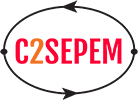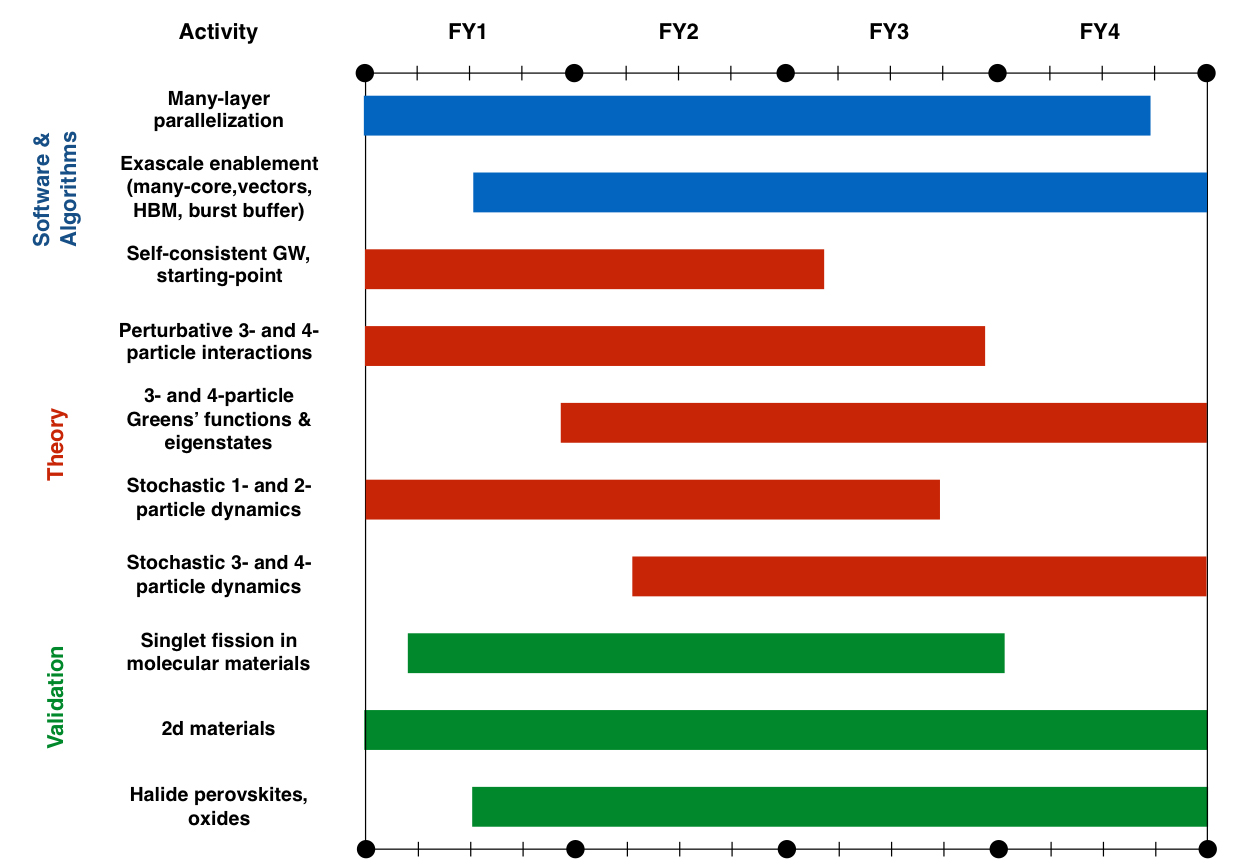Vision & Major Goals

The discovery and development of new functional architectures for harvesting, converting, and storing energy is at present significantly limited by our understanding of how integrated complex material components assemble and transduce energy. Predictions of the excited behavior of such materials require going beyond ground-state properties, to excited states and dynamics, and associated structural and orbital relaxations. While public domain software is widely available and used to search for materials with desirable ground-state properties, similar tools for excited states (e.g., predicting electronic spectra, optical responses, excitation-induced conformation changes, fast electron dynamics, etc.) are still nascent, particularly for complex systems with thousands of atoms. The lack of scalable, versatile, and user-friendly software for excited-state properties has been a major roadblock for the design of materials for energy applications.
Accurate calculations of excited states, which involve significantly different and higher-level treatment of many-body interaction effects, are at the leading edge of modern materials theory. Development of predictive excited-state methods and their integration into versatile public-domain software would be transformative for the field. Indeed, pioneering work at LBNL and elsewhere in developing ab initio many-body perturbation theory has led to groundbreaking advances in our abilities to predict and understand one-particle and neutral two-particle excitation phenomena in increasingly complex materials. However, key phenomena such as excited-state dynamics and relaxation, non-linear spectroscopy, three or more particle correlations – with algorithms utilizing exascale computing – have yet to be fully addressed by existing ab initio software.
The objective of the Center is to develop general software, incorporating new methods and theories, to elucidate and predict excited-state phenomena in energy-related materials with emphasis on addressing the challenges described above. Our software will use advanced algorithms and first-principles many-body perturbation theory that fully include but also go well beyond the interacting one- and two-particle Green’s function (GFs) to compute quasiparticle excitations and lifetimes, optical spectra, exciton-exciton interactions, trion formation, nonlinear optical processes, excited-state decay, time-dependent phenomena, and more. The methods and software developed will be highly relevant to complex materials for energy applications and be validated through close collaboration with experimental groups. The end result will be an integrated open-source software package (BerkeleyGW) with unique capabilities to predict and understand a variety of excited-state phenomena from first principles with exascale performance.
Learn more: People | Software | Publications | Events


